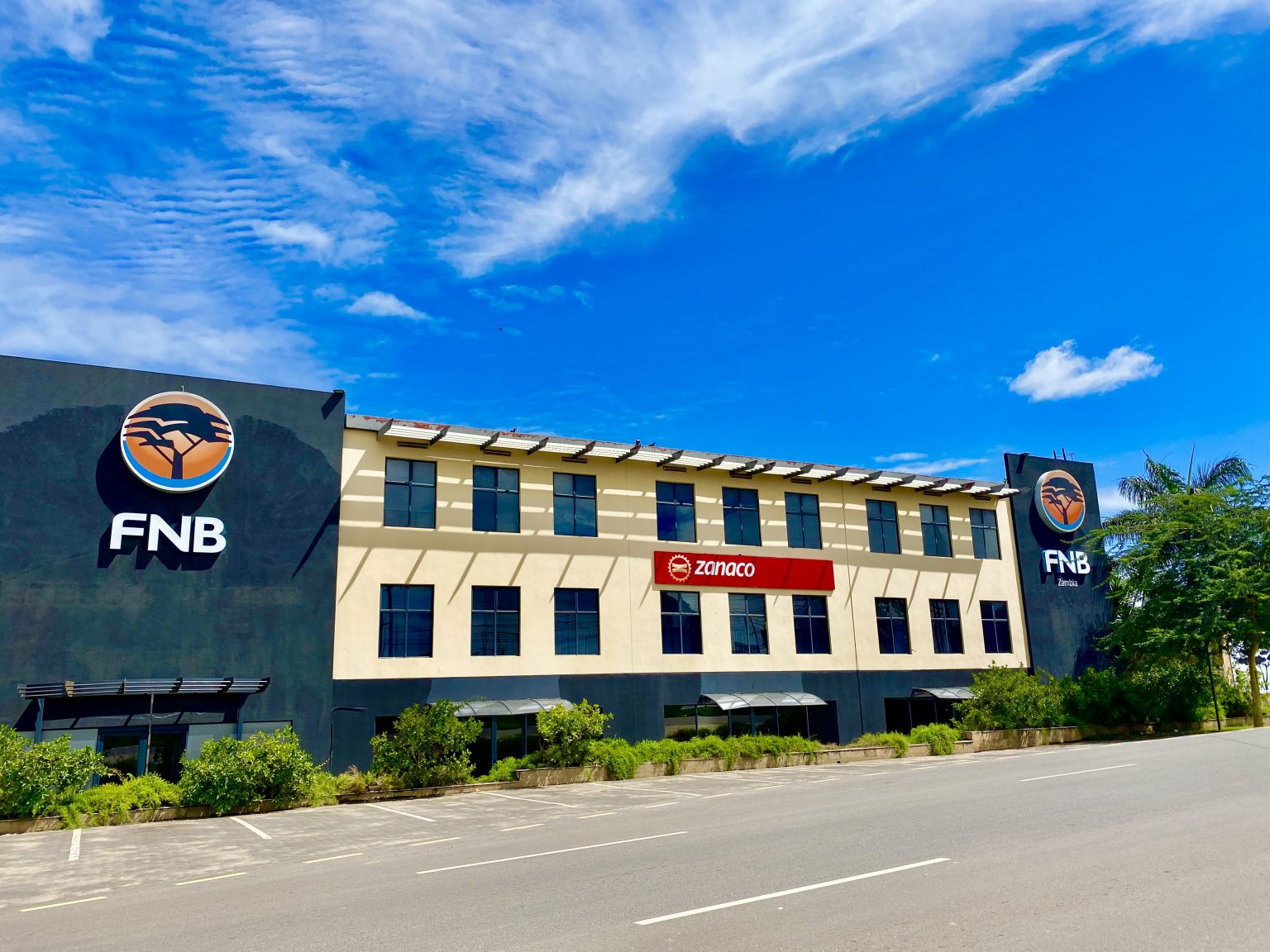First quarter financial results for banks in Africa’s red metal producer, Zambia, have signalled appetite for sovereign deals and a risk skew towards shorter dated higher yielding assets inferred from income decomposition, asset and after tax earnings growth. Despite commencing the year with healthcare concerns on the back of a second ferocious COVID strain, the banking sector showed resilience.
Standard Chartered Bank new head office ‘green’ building near Addis Ababa Drive roundabout in Lusaka the capital.
HEADLINE EARNINGS
Zambia largest indigenous bank Zanaco Plc demonstrated income leadership across almost all lines, save foreign exchange trading, growing by 65.0% to K815.5 million while Stanbic Bank rallied behind at K703.3 million with Absa, First National Bank and Atlas Mara making it to the top 5 income earners score board. Stanbic led the foreign exchange trading revenue curve with an 80.5% climb to K186.3 million with Absa, Zanaco, Atlas Mara and FNB rallying behind at levels close to half its competitor levels respectively. A fair share of income growth was seen in the top 5 banks attributed to competitiveness in both corporate and retail products.
First National Bank head office at Acacia Park in Lusaka the capital.
GOVIE YIELD VERSUS ADVANCES RETURNS ANALYSIS
Based on the size of the investment in government securities and associated duration income, it is evident that average annualised yields or returns range between 18.8% – 25.8% suggesting a risk skew theme towards shorter dated higher yielding assets (treasury – bills) closer to the 1-year tenor. (Government securities returns revealed the following for the top 5: Zanaco PLC – 22.2%, Stanbic Bank – 18.8%, Standard Chartered Bank – 23.3%, Indo Zambia Bank – 25.8% and Absa PLC- 22.0%). This is consistent with the market performance of the government securities market in times of pandemic induced sovereign strain which has seen more participation in the treasury bill than in bond auctions. Credit returns based on advances income earned versus size of the advances book reveals annualised returns of between 11.2% – 18.0%. (Advances returns revealed the following for the top 5: Zanaco PLC – 21.1%, Absa PLC – 11.8%, Stanbic Bank – 15.2%, Atlas Mara Bank – 18.0% and Indo Zambia Bank – 15.5%).
The spread between the government security versus credit yields suggests for the latter, there is a higher premium earned for the quantum of risk taken close to that from investment in securities and this is suspected to be that taken through extending balance sheet to the celebrated Farmer Input Support Program – FISP. The varying yields for advances returns clearly spell the portion of sovereign risk each of the top 5 banks named took up in the celebrated deal.
Absa premier banking suite at its head office in Lusaka.
MANAGEMENT REORGANISATIONS AND LEGAL SETTLEMENTS WEIGH COSTS
Expenses for 1Q21 showed a widened trajectory reflecting legal provisioning, business re-organisation settlements costs and exchange rate related costs on dollar denominated invoices. The top 5 showed significant cost containment between 44.0% – 63.0% in cost to income ratio with improvements – Stanbic Bank at 44.0% from 55.0%, Zanaco PLC at 63.0% from 79.0%, Standard Chartered Bank to 34.0% from 133.0%, Atlas Mara Bank 49.0% from 89.0% and First National Bank from 55.0% from 63.0%. This continues to reflect quality of executive management, autopsy effects of balance sheet sanitisation, lessons learnt from the pandemic experience driving a more cautious cost taking strategy.
Stanbic Bank Zambia head office on Addis Ababa Drive in Lusaka the capital.
DISRUPTION ON THE EARNERS LISTINGS AS PROFITABILITY MOMENTUM BUILDS
Stanbic Bank remains the most profitable bank as measured by earnings after tax that grew 53.2% to K241.7 million while Zambia National Commercial Bank Plc largest indigenous bank quadrupled its year on year profits to K208.9 million. Rebounding from a 2020 loss streak was Standard Chartered Bank in third place at K150.2 million supported by a more cautiously optimistic strategy while the autopsy effects of the Finance Bank – BancABC M&A was evident in the Atlas Mara strong performance at K116.5 million supported by exemplary cost efficiency. A successful balance sheet clean up allowed First National Bank a debut appearance in the top 5 earners bracket a few Kwacha shy of K100 million at K96.25 million.
Zanaco Plc head office on cairo road in Lusaka the capital.
BANKING OUTLOOK FOR 2021
In the labyrinth of a debt restructure while on the cusp of an IMF deal, Zambia heads to the polls in 3 months exactly determining what the political landscape will be be like. 1Q21 results has seen more banks in positive earning zone while risk themes identified gravitate around investment in shorter dated assets such as treasury bills as players remain cautious about duration risk while having appetite for local currency denominated sovereign deals such as FISP whose participation has increased with a three times bigger budget pronounced by the authorities. Zambia’s outlook with rising copper prices and an IMF deal to be signed soon will improve risk appetite across the sectors which could see risk grades for IFRS9 compliant banks ease and at this point profitability will unwind. The digitisation curve has and is expected to drive competitiveness in 2021 with many players with cards under their sleeves waiting to unleash. Despite the turbulence in the foreign exchange market in dollar scarcity and sovereign strains, the banking sector remains fairly well capitalised and operationally resilient.
The Kwacha Arbitrageur

